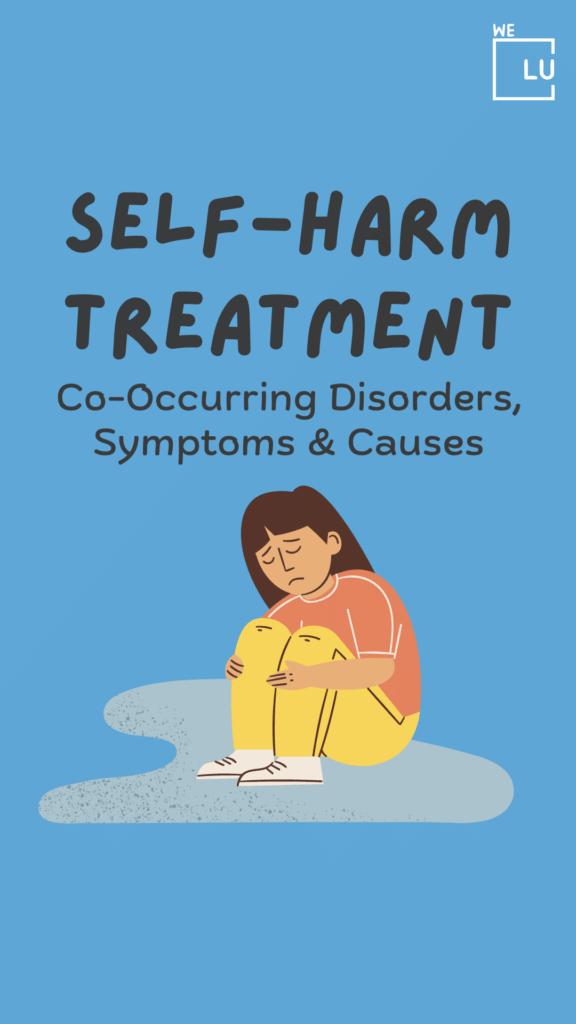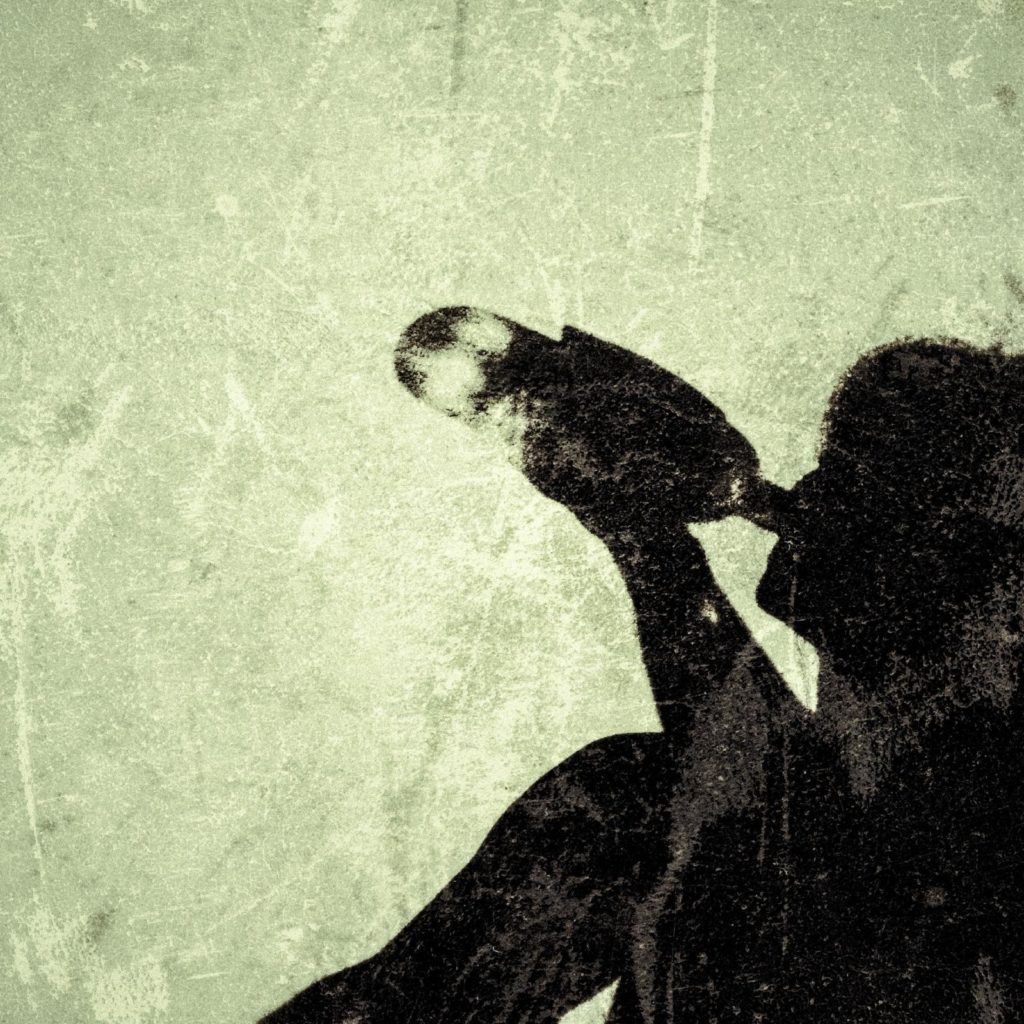What Is Self Destructive Behavior?
Self destructive behaviors or dysregulated behaviors are those that are bound to harm you mentally or physically. It may be indirect or unintentional, or it may be that you know exactly what you’re doing, but the urge is too strong to control. Self destructive behaviors provide relief or even pleasure in the short term but ultimately get in the way of living a satisfying and fulfilling life. These behaviors can include substance use disorder, compulsive computer gaming, smoking, binge eating, self-harm, chronic avoidance, or other behaviors that feel helpful but harmful over time. It can be related to a mental health condition, such as depression, borderline personality disorder, PTSD, or anxiety.
Self Destructive Behavior Examples
Many of us are engaged in self destructive behaviors that have become recurring habits. We allow these self destructive behaviors to interfere with personal happiness and growth. In most cases, people do not openly recognize what or why they do certain bad habits. Self-sabotage is when we do something that gets in the way of our intent or bigger goals and dreams. We want something, but somehow, we need to accomplish it. Why? Because somewhere deep in our subconscious, we often fight against that goal because of fear of failure.
People suffering from self destructive behavior differ dramatically, but some histories or traits are standard. Everyone has a specifically different story, but as a general overview, here are some of those common self destructive behavior signs:
- Born to feel emotions more than others. This is a good thing. There are a lot of advantages to being able to feel and connect more.
- Experiences of neglect, physical abuse, or continuous criticism.
- Routine experiences with family members who discourage the expression of emotions or have self-destructive behaviors themselves when coping with their feelings.
- Bullying at school, abuse from someone outside of the family, being mistreated or excluded by other children.
Root Of Self Destructive Behavior
The definition of self-destructive behavior is any behavior or lack of behavior that actively contributes to negative results. Self-destructive behavior is caused when someone inflicts harm on themselves or puts themselves in a risky situation where damage may happen. There are many forms of self-destructive behavior, and their meaning is comprehensive. This type of action can be physical or emotional. It has long-term effects on the individual that can impact various areas of their life.
In some situations, a person may be unaware they are even performing a self-destructive behavior. They may surrender to a strong urge or not understand the consequences. In many cases, self-destructive behavior is a maladaptive coping mechanism or a stress reaction. At the moment, it brings relief and pleasure to the person. However, it is harmful in the long run.
Substance abuse and addiction are self-destructive behaviors, and a return to drug or alcohol abuse may be a coping mechanism or a perpetuation of self-destruction. These behaviors may stem from childhood trauma or abuse, low self-esteem, or mental illness. Around half of all drug abusers and a third of alcohol abusers also have a mental illness. Depression, anxiety, and mood disorders often co-occur with substance abuse disorders and must be diagnosed and managed to promote recovery. Substance abuse can exacerbate mental illness symptoms, increasing stress, anxiety, and depression.
Self Destructive Behavior List
Symptoms and practices of self destructive behavior include the following:
- Housing self-defeating mindsets.
- Sabotaging relationships.
- Social suicide. (doing an act that will harm or destroy your social reputation).
- Drug and alcohol abuse.
- Failing to take action.
- Over-eating.
- Under-eating.
- Forced incompetence.
- Going out of your way to harm others.
- Self-harm.
- Self-pity.
- Hiding from emotions.
- Refusing to be helped.
- Unnecessary self-sacrifice.
- Spending too much.
- Physical neglect.
- Mental neglect.

Skip To:
Learn More:
- Self-Harm Treatment
- Addiction and Self-Destructive Behavior
- Self-Esteem and Addiction Recovery
- How To Help Yourself?
- 6 Amazing Self-Love Activities
- Becoming Your Best Self
- Psychiatric Disorder Treatment
- Mental Health Videos & Addiction Videos
- Dual Diagnosis Treatment
- Co-Occurring Disorders Treatment
Self-Destructive Behavior: Signs & Facts
Is Self Harm Self Destructive Behavior?
Self-destructive behavior occurs when you do something sure to harm yourself emotionally or physically. Thus, causing you to self-harm.
There are more subtle types of self-sabotage as well. You might not even realize you’re doing it, at least not consciously. Here are several examples of self destructive behavior:
- Being self-judgmental that you are not intelligent, talented, or beautiful enough.
- Modifying oneself to impress others.
- Clinging to someone who does not care about you.
- Alienating or hostile behavior that drives others away.
- Chronic avoidance, procrastination, and passive-aggressiveness are examples of maladaptive behaviors.
- Sulking in self-pity.

Signs Of Self Destructive Behavior
According to one study, self-harming behavior can be misinterpreted as BPD or borderline personality disorder. It is critical to evaluate whether self-destructive behavior is a symptom of a mental health issue. This understanding will aid in therapy planning. [1]
The following criteria define nonsuicidal self-injury:
- It is causing physical damage without suicidal intent on at least five days in the previous year.
- Doing self-harm nurtures happy sensations, relieves unpleasant thoughts or feelings, or settles problems.
- Self-injury obsession or frequent desires to self-harm.
- Experiencing considerable anguish as a result of self-harm.
- Another ailment does not cause it.
Self Destructive Behavior Test
Begin by seeking a skilled mental health practitioner’s evaluation or a self-destructive behavior test. The therapist will learn more about your behavior and its therapeutic importance through an interview with you. It is critical to evaluate whether self-destructive behaviors are a symptom of a mental health issue. This understanding will help in treatment planning.

Get Your Life Back
Find Hope & Recovery. Get Safe Comfortable Detox, Addiction Rehab & Dual Diagnosis High-Quality Care.
Hotline(844) 597-1011Self Destructive Behavior Statistics
For decades, knowledge about nonsuicidal self destructive behavior was limited to only a few empirical studies. Nevertheless, the last 10 to 15 years have witnessed an explosion of research and significant advances in knowledge about nonsuicidal self-injury. We now comprehend much about the classification, prevalence, correlates, forms, and functions of nonsuicidal self destructive behavior and have dispelled many misconceptions.
5%
Research reveals that self-injury occurs in approximately 5 percent of adults in the US.
Source: NCBI
35%
Studies indicate an even higher risk for self-injury among college students, with rates varying from 17-35 percent. [2]
Source: NCBI
20%
Nonsuicidal self-injury is most common among young adults. Lifetime rates in these populations are about 15 percent to 20 percent, and onset typically occurs around age 13 or 14. In contrast, about 6 percent of adults report a nonsuicidal self-injury history. [3]
Source: NCBI
Get Help. Get Better. Get Your Life Back.
Searching for Accredited Drug and Alcohol Rehab Centers Near You?
Even if you have failed previously and relapsed, or are in the middle of a difficult crisis, we stand ready to support you. Our trusted behavioral health specialists will not give up on you. When you feel ready or just want someone to speak to about therapy alternatives to change your life call us. Even if we cannot assist you, we will lead you to wherever you can get support. There is no obligation. Call our hotline today.
(844) 597-1011What Causes Self Destructive Behavior?
Persistent self destructive behaviors are more common in those who lack internal control over their lives, environments, or results. This is known as having an “external locus of control,” widespread in mental and behavioral health issues. Individuals with significant psychotic symptoms, impulse control difficulties, or severe depression are more likely to demonstrate self-destructive tendencies.
- Alcohol or Drug Abuse
- A person who engages in self destructive behaviors might suffer from an alcohol or drug addiction. Individuals who use substances as coping mechanisms frequently have a troubled past and abuse alcohol and drugs to numb their feelings. They seek short-term relief for their pain, and alcohol and drugs provide the perfect outlet in their minds to achieve their goal. However, negative feelings and uncomfortable emotions always come back, making this a dangerous habit in the long run.
- Self-Harm
- Burning or cutting oneself is an unhealthy way of coping with emotional pain. Most of the time, self-harm is not a suicide attempt, but it can lead to suicide deliberately or accidentally. If you or someone you know is hurting themselves, please seek help immediately. Self-harm is a sign of much deeper issues that need to be addressed.
- Impulsive Behaviors
- Self-destruction habits include reckless spending, hypersexuality, drug addiction, theft, and other impulsive actions. Someone suffering from this may have a bipolar disease or a personality issue, making it difficult for the patient to manage their emotions. This and an incapacity to appraise consequences predispose a person to impulsive behavior.
- Being Too Sensitive
- Self destructive behavior in relationships while being too sensitive is often a genetic trait and can’t be helped; some individuals who feel things more deeply use this to manipulate people. For instance, if someone feels like they have to walk on eggshells around a person, this is self-destructive behavior. The overly sensitive person might not mean to make them feel this way, but they still use their emotions to control the person or situation.
- People-Pleasing
- People might think there’s no danger in trying to please others, but some individuals take this to the extreme. You are letting others walk all over you to keep them happy only results in your misery. Moreover, they will take advantage of your self-sacrificing behavior and won’t respect you. This self-destructive behavior is usually overlooked because it seems relatively harmless; in the end, however, self destructive relationship behavior causes pain for both parties involved.
- Negative Thoughts
- Everyone deals with negative thinking, but when it becomes all-encompassing and intrusive, it’s a cause for concern. Individuals with frequent negative thoughts often suffer from a lack of control over emotions, which often lead to other problems in life. However, this destructive behavior can be overcome through yoga, mindfulness meditation, or other relaxing activities requiring full attention.
- Burying Emotions
- Hiding your emotions might feel like a healthy way of dealing with them, but the opposite is true. Society encourages us to wear masks and pretend, but many individuals are deeply hurt. Refusing to acknowledge emotions to appease others or to appear strong will only backfire and lead to a breakdown later.

First-class Facilities & Amenities
World-class High-Quality Addiction & Mental Health Rehabilitation Treatment
Rehab Centers TourRenowned Addiction Centers. Serene Private Facilities. Inpatient rehab programs vary.
Addiction Helpline(844) 597-1011Proven recovery success experience, backed by a Team w/ History of:
15+
Years of Unified Experience
100s
5-Star Reviews Across Our Centers
10K
Recovery Success Stories Across Our Network
- Low Patient to Therapist Ratio
- Onsite Medical Detox Center
- Comprehensive Dual-Diagnosis Treatment
- Complimentary Family & Alumni Programs
- Coaching, Recovery & Personal Development Events
How To Stop Self Destructive Behavior
While psychologists suspect that self-destructive behaviors could be coping mechanisms (i.e., to deal with stress, social demands, pressure, etc.), others consider self-destructive behavior as a way of maintaining comfort zones due to feelings of unworthiness or lack of confidence (e.g., staying at the familiar bottom of the social ladder).
Self-destructive behavior comes in many guises. Some intense, some not so fierce. But to continue internally growing, connect with your true self, and live a life you love, it’s best to look at your devils right in the face. You might start thinking that you’re fundamentally “broken” or something is severely wrong with you. You’re not broken; you’re just human. The goal isn’t to feel terrible about yourself. The goal is to see that “it is what it is” and find ways to reverse, undo, and triumph over your self-destructive tendencies.
Break The Cycle of Shame
Shame involves an internalized feeling of being humiliated and exposed. Shame is different from guilt. Shame is a feeling of badness about the self. Regret is about behavior, a sense of “conscience” from doing something wrong or against one’s values.
Everyone can break the cycle of shame, even when the odds seem insurmountable. The first step is recognizing how shame fuels your self-destructive behaviors and acknowledging the guilt. It’s okay to have flaws. We all do because we are human and deeply flawed.
Shame can be healed and relieved by:
- Breaking secrecy with people who understand.
- Taking healthy risks to be known and seen authentically, acting from a positive motive, and trying out new behaviors in a safe (nonjudgmental) setting.
- Taking actions that generate pride.
You can break the cycle. It will take time and patience, but the more you make a concerted and conscious effort, the more likely you will be able to end self-destructive behavior and the cycle of shame.

Don’t Believe The Negative Self-Talk
There will be thoughts in your head about not being able to do it or wanting to quit. Please don’t listen to them. See and acknowledge them, but don’t believe what they say or follow their commands. They just come up because your brain is trying to get out of hard work. Lying brain, lazy brain. Instead, come up with better counterarguments, “Brain. You can’t do this.” “You. I can and have. Other people have done this, and so can I. And I will only really know if I try.”
Get Support
Ask a good friend, partner, or family to support you. Ask them to check on you and not let you fail. Find a group online if you don’t have anyone supportive around you.
Use Failure to Learn
Failure should not be evidence that you can’t. Use it as a chance to learn: learn about how you work best, about negative self-talk and urges, and how habits work. Learn about obstacles, which are unavoidable, and how to get around them. Each time you mess up, this is an excellent opportunity to get better, to improve your method. Failure isn’t a bad thing, and it’s new information to improve your habit method.
Letting Go of Self-Destructive Behaviors
There are many psychological reasons for self-destructive behavior, but so are the methods you can use to help yourself or a loved one recover. If you’re unsure how to help a self-destructive person, perhaps that person being yourself, these pointers will be helpful. They are appropriate for any self-destructive behavior but can help you form a solid foundation for addiction recovery in particular:
1. Define Your Behaviors. Alcohol and drug addiction is a significant behavior to define, so it’s helpful to break it down and consider all its negative behaviors. For example, you may find that you tend to create emotionally-fraught situations with one or more of your family members when drunk. Or maybe you prioritize using drugs over things like nutrition and personal hygiene.
Self-destructive behaviors can be small things, like telling yourself you don’t deserve certain things or talking to yourself in a defeatist manner. They can also be the absence of action, such as not paying the bill or deciding not to feed yourself enough to afford drugs or alcohol.
Write down as many of these behaviors as possible, so you can start tackling them individually. You can ask family or friends to help you flesh out your list, making you aware of some new behaviors.
2. Identify Triggers. What makes you self-sabotage? It’s a big question, but you can start by identifying places, situations, people, or things that cause a spike in stress. Aside from general irritation or boredom, stress, and anxiety are the biggest triggers for alcohol or drug addiction cravings and other self-destructive behavior. If alcohol and drugs are a way to shut down unpleasant feelings, you must know what emotions you’re trying to turn off.
Recognizing situations that cause cravings also allows you to avoid them altogether. For example, if you know that seeing others drinking brings on powerful cravings, it’s not a great idea to go to a bar or hang out with that friend who’s constantly doling out beers.
Identifying triggers also allows you to set up healthy coping strategies in case you find yourself in a difficult situation.
3. Track Your Behaviors. Keeping a journal of your actions and reactions is vital to changing self-destructive behavior. You must log any self-destructive behaviors you engage in and create a short pro and con list for each. This will help you prioritize which behaviors to work on first and uncover patterns of thinking that underlie your actions.
For instance, if you’re struggling with alcohol abuse, you’ll probably experience thoughts such as “One drink won’t hurt,” “I need/deserve this drink,” “What’s the worst that could happen?” or “No one has to find out.”
These thoughts are unhelpful, intrusive, and irrational, but they’re a natural reaction of a brain convinced that alcohol will solve its problems. Keeping track of these thoughts can give you a more tangible and objective perspective and stop you from engaging in the behavior.
4. Practice Mindfulness. Self-destructive behaviors, including alcohol or drug addiction, often arise from our inability to process what is happening to us at a given time. A person might feel fear about a meeting with their boss the next day and try to shut it off by drinking rather than giving the situation the time and consideration it needs to be resolved.

Seeking Help for Addiction and Self-Destructive Behavior
It is common for those who show self-destructive behavior to sabotage their recovery actively. With self-destructive behavior, it is usually hard for the individual to allow any loved ones to help them seek treatment and remain sober. The person might also not see any point in seeking treatment, as their self-defeating thoughts might make them believe that it’s pointless or that they will fail.
It is also possible that the person might no longer care enough about their well-being with self-destructive behavior and will refuse and fight against receiving any treatment. They might be under the belief that they greatly enjoy the way their destructive behavior makes them feel and will consider it self-sacrifice if they keep it contained within their own life.
Both emotional and physical components of addiction and self-destructive behaviors must be addressed to recover and regain a healthy balance in life. Medical detox, or removing harmful chemicals from the body, is often the first physical step toward recovery that may be managed in a medically supervised detox facility to help smooth the process and ensure safety. Only after the user is clearheaded and drug- or alcohol-free can someone address the psychological roots of addiction.

Cognitive-behavioral therapy, or CBT, is often used for flushing out and discovering triggers that often lead to self-destructive behaviors and modifying negative behaviors, thoughts, and visions of oneself into more positive ones. Therapies can help identify problem behaviors, and trained professionals can work with clients to reinvent and reassess those behaviors into more positive ones. New life skills and coping tools are taught to reinforce healthy behaviors and improve self-esteem while reducing anxiety and stress.
Self-destructive treatment can be much more complex when combined with addiction. Many who suffer from both behaviors need advanced care that simultaneously tackles both issues. Dual diagnosis treatment grasps the various constraints that lead people to self-destructive. This will help them discover the problems and cope in a more way.
Now that we’ve answered the question “how to stop self destructive behavior” and learned about the risks that come with it. It is essential to seek professional help if you or a loved one are struggling with long-term self-destructive behavior and addiction. Contact one of our helpful treatment specialists today. We Level Up rehab center can provide information on dual diagnosis and detox programs that may fit your needs.
Self Destructive Behavior Quotes
“One of the greatest evils is the foolishness of a good man. For the giving man to withhold helping someone in order to first assure personal fortification is not selfish, but to elude needless self-destruction; martyrdom is only practical when the thought is to die, else a good man faces the consequence of digging a hole from which he cannot escape, and truly helps no one in the long run.”
― Mike Norton, Just Another War Story
“This is how women self-sabotage and self-destruct. Unless we have constant witnesses to our hard work, we are convinced we pull off every day of our lives through smoke and mirrors.”
― Sarah Breathnach, Peace and Plenty: Finding Your Path to Financial Serenity
“Never loan your heart to hatred; it pays you back with self-destruction. The majority of people living are not aware that anger is an acid that destroys its own container.”
― Israelmore Ayivor, Daily Drive 365
Top 3 Self Destructive Behavior FAQs
-
What is the definition of self-destructive behaviors?
Self-destructive behavior occurs when a person engages in acts that are certain to harm them. It can range from distancing themselves from others to self-harming habits such as gambling. Self-destructive behavior is defined as causing physical or emotional harm to oneself.
-
Which action is a self destructive behavior?
Self-destructive behavior occurs when you do something certain to bring emotional or physical harm to yourself. Some self-destructive behaviors are more visible, for example, attempting suicide, binge eating, obsessive behaviors such as gambling, gaming, or shopping rash, dangerous sexual conduct, booze and drug abuse, and self-harming behaviors such as cutting, hair pulling, and burning.
-
How to help someone with self-destructive behavior?
Acknowledge the hurt that’s causing this behavior. Let someone know their pain is valid and that they deserve to be able to let it out (either to you or a trained mental health professional).
World-class, Accredited, 5-Star Reviewed, Effective Addiction & Mental Health Programs. Complete Behavioral Health Inpatient Rehab, Detox plus Co-occuring Disorders Therapy.
CALL(844) 597-1011End the Addiction Pain. End the Emotional Rollercoaster. Get Your Life Back. Start Drug, Alcohol & Dual Diagnosis Mental Health Treatment Now. Get Free No-obligation Guidance by Substance Abuse Specialists Who Understand Addiction & Mental Health Recovery & Know How to Help.
3 Great Tips to Maintain a Healthy Heart (Emotionally) & How To Improve Your Mental Health Overall Video
Tips For an Emotionally Healthy Heart:
1: Find out who your true friends are.
Many of us rotate between various social circles and groups of people, and everyone seems nice on the surface. But everyone who smiles at you does not necessarily have your best interests at heart. Pay attention to how people you consider your friends act when you’re high and when you’re low when you get a promotion, lose a job, enter a new relationship, or end one. Their initial response will be their authentic one. To keep a healthy heart, you want to surround yourself with people who are on your team and will be solid like roots, not wavy like leaves.
2: Find a way to express your feelings.
One of the best and most effective ways to maintain a healthy heart is never to hold your emotions inside. When you swallow your feelings, they have nowhere to go but your mind. You can easily create a negative narrative about how loved and valued you are. So find a way to express your emotions by journaling, meditating, praying, writing poetry, writing music, talking to a friend, or talking to a therapist. Finding an outlet for your emotions will make it easier for you to understand and manage them.
3: Be kinder to yourself.
Our last and favorite strategy for maintaining a healthy heart is to be kinder to yourself. You are a human, which means you will make mistakes. You will need to do better. But your mistakes and your past do not define who you are. We are constantly evolving and growing, and that takes time and patience. Like plants, we need water and nutrients to help us inside and sunlight to warm us outside. Learn how to rest; do not drive yourself into the ground trying to meet deadlines. If someone offers to take care of you or bring you food because they’re worried about you, let them.
We hope you find these strategies useful!
Experience Transformative Recovery at We Level Up Treatment Centers.
See our authentic success stories. Get inspired. Get the help you deserve.
Start a New Life
Begin with a free call to an addiction & behavioral health treatment advisor. Learn more about our dual-diagnosis programs. The We Level Up Treatment Center Network delivers recovery programs that vary by each treatment facility. Call to learn more.
- Personalized Care
- Caring Accountable Staff
- World-class Amenities
- Licensed & Accredited
- Renowned w/ 100s 5-Star Reviews
We’ll Call You
Search We Level Up Self Destructive Behavior Mental Health Topics & Resources
Sources
[1] Self-injurious behavior is common also without personality syndrome – National Center for Biotechnology Information (NCBI)
[2] Nonsuicidal Self-Injury: A Review of Current Research for Family Medicine and Primary Care Physicians Patrick L. Kerr, Jennifer J. Muehlenkamp, James M. Turner The Journal of the American Board of Family Medicine Mar 2010, 23 (2) 240-259; DOI: 10.3122/jabfm.2010.02.090110
[3] Klonsky ED, Victor SE, Saffer BY. Nonsuicidal self-injury: what we know and what we need to know. Can J Psychiatry. 2014 Nov;59(11):565-8. DOI: 10.1177/070674371405901101. PMID: 25565471; PMCID: PMC4244874.
[4] Brådvik L. Suicide Risk and Mental Disorders. Int J Environ Res Public Health. 2018 Sep 17;15(9):2028. DOI: 10.3390/ijerph15092028. PMID: 30227658; PMCID: PMC6165520.
[5] Orsolini L, Latini R, Pompili M, Serafini G, Volpe U, Vellante F, Fornaro M, Valchera A, Tomasetti C, Fraticelli S, Alessandrini M, La Rovere R, Trotta S, Martinotti G, Di Giannantonio M, De Berardis D. Understanding the Complex of Suicide in Depression: from Research to Clinics. Psychiatry Investig. 2020 Mar;17(3):207-221. DOI: 10.30773/pi.2019.0171. Epub 2020 Mar 23. PMID: 32209966; PMCID: PMC7113180.
[6] Singhal A, Ross J, Seminog O, Hawton K, Goldacre MJ. Risk of self-harm and suicide in people with specific psychiatric and physical disorders: comparisons between disorders using English national record linkage. J R Soc Med. 2014 May;107(5):194-204. DOI: 10.1177/0141076814522033. PMID: 24526464; PMCID: PMC4023515.
[7] Mental Health Myths and Facts – U.S. Department of Health & Human Services Available from: https://www.mentalhealth.gov/basics/mental-health-myths-facts
[8] What To Look For Self-Harm – U.S. Department of Health & Human Services Available from: https://www.mentalhealth.gov/what-to-look-for/self-harm
[9] Self-Directed Violence and Other Forms of Self-Injury – Centers for Disease Control and Prevention (CDC) Available from: https://www.cdc.gov/ncbddd/disabilityandsafety/self-injury.html
[10] Self-Harm – U.S. Department of Health and Human Services National Institutes of Health Available from: https://medlineplus.gov/selfharm.html


